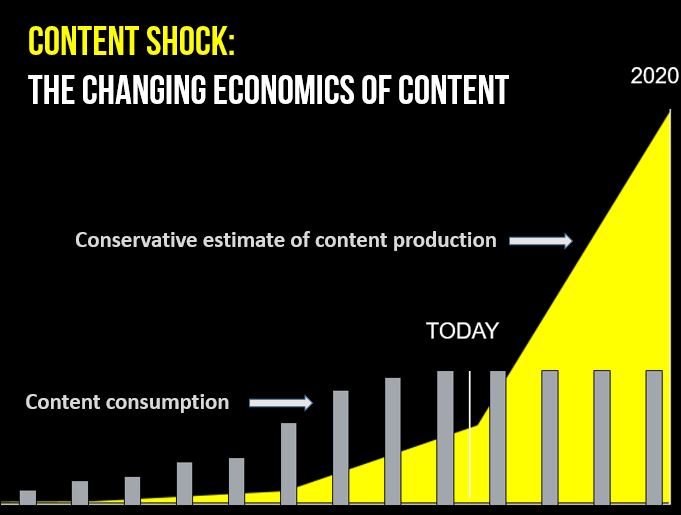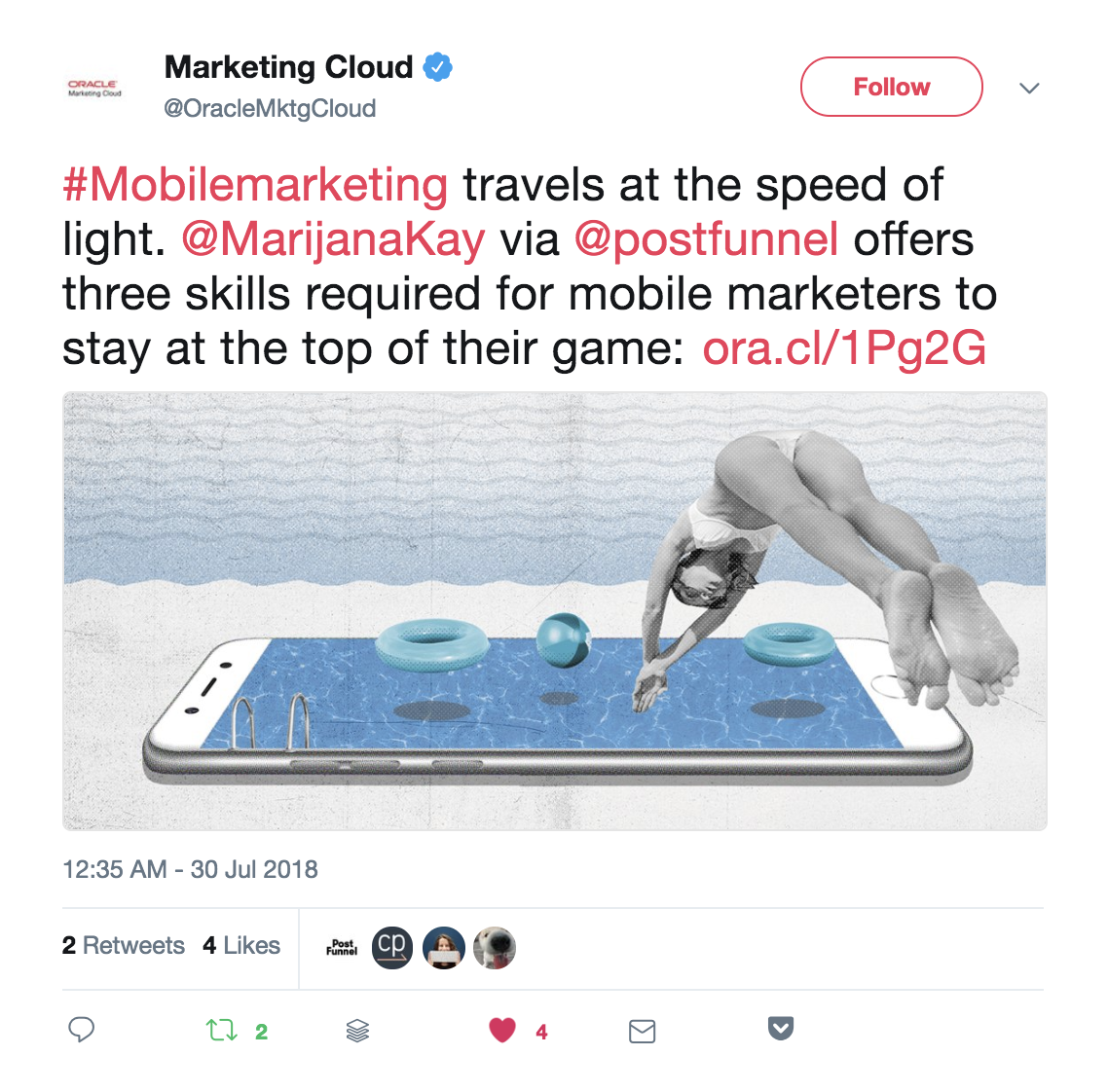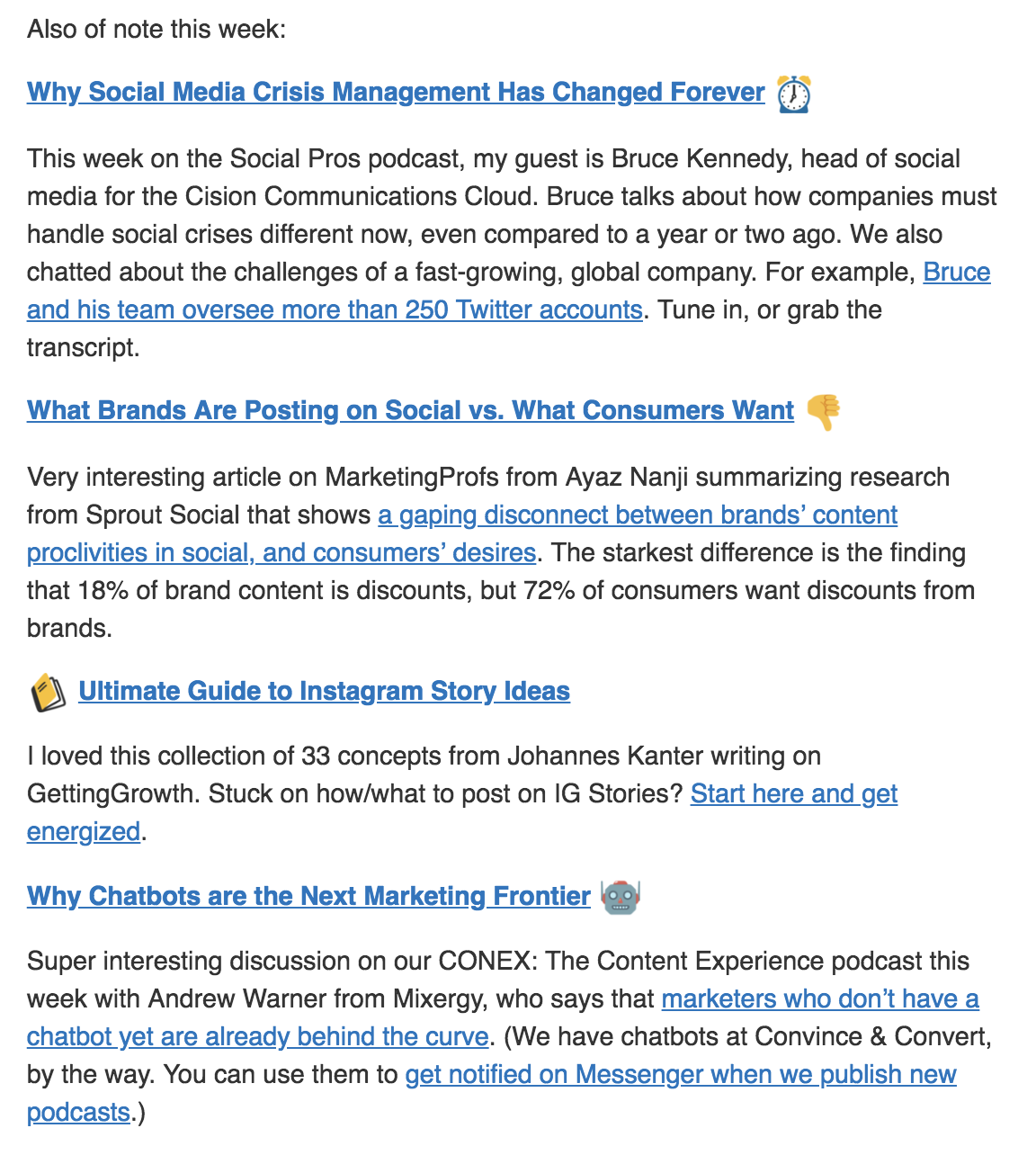
It’s often a challenge to dive into content marketing head first.
It costs you money and time. You can’t see results quickly. And on top of that, if you’re going in the wrong direction, it might take you months until you realize it.
To make content marketing work for the organization—meaning, to make it sell and bring positive return on investment—companies fall into the trap of only talking about themselves.
While this works later on in the funnel when potential customers are ready to buy, there is a key element that needs to happen beforehand: their trust in your capability to solve the challenge they’re facing. In other words, they have to rely on you first.
In the 2018 research from Content Marketing Institute, these were the top three answers on concepts that B2B marketers consider the most when creating content:
- Ensuring that their content is fact-based and/or credible
- Considering how their content impacts the overall experience a person has with their organization
- Prioritizing delivering content quality over content quantity
If top-of-the-funnel authority building is the question, content curation is the substantial part of the answer.
However, if done wrong, content curation can take away time that you simply don’t have as a marketer. Curation only works if you employ all three steps: select, enrich, and share. But if your job makes you wear many hats, you might never get past the first step.
Let’s dive into these challenges and work out their solutions.
Why your audience needs someone to rely on for best content
You already know it: your audience is looking to learn about what matters to them from the best available resource(s) online.
However, they’re facing a problem: there is too much content out there for them to feel confident about knowing it’s the best it could be.
In fact, the amount of content produced has long outgrown our human capacity to consume it: every minute, there are 4,000 new published blog posts and a whopping 300 hours of new YouTube video content.
We already talked about Mark Schaefer’s concept of content shock. When he first wrote about it, he used the simple economic idea of supply and demand to paint the picture of the diminishing value of content marketing.
Even though human content consumption went up to 11 hours a day, we still cannot consume 300 hours of video per minute. This is from Schaefer’s original 2014 article on content shock:

Your audience wants to learn from the best. They want to master the topics they’re interested in. But they cannot do it on their own, and they need someone reliable and with deep expertise to provide them with the best resources. This is where you have the opportunity to shine.
Why others’ content—not your own—is the solution
As hinted earlier, brand-driven content makes a lot of sense when it’s presented to a highly informed prospect that’s done her research and is ready to buy. She deeply understands her pain points and wants to know what makes a specific brand worth her time and money.
Before that, however, she wants to learn. She isn’t looking for brand names and out-of-the-box solutions. She needs vetted in-depth information, and you can be the one to deliver it by curating content from trusted experts. Not only will you serve your reader with hand-picked content from leading experts, but also build relationships with those influential voices in your industry.
Sifting through such a large stream of content is a challenge both for you and your audience. It leaves a lot of room to miss out on some of the highest quality pieces of content on the planet.
This is good news: you can use an advanced content curation and filtering tool to get to a beneficial position and curate the best content in the shortest time. Not just that—you can increase the value of that content by adding your own voice and credibility to it, which is what we’re looking into next.
How a tool helps you to curate most relevant and timely content
Automation in content marketing and curation often has bad reputation. If content marketing is all about your audience, how could you possibly automate something so genuine as caring for your audience through content?
The trick isn’t in automating your content curation, but the discovery of outstanding content. Let’s look at two scenarios:
First, you could curate your content by following RSS feeds of industry blogs and automate sharing on your social media channels. The problem? You’re always sharing content from the same sources, you depend on their publishing schedules, and you don’t add your own thoughts and expertise into the mix.
Also, let’s not forget that Twitter now punishes multiple duplicate updates, so you can’t just recycle your previous tweets either.
On another hand, you could automate the process of finding the top-of-the-industry content so that it waits for you to simply add your thoughts and opinion on it before you share it with your followers, readers, or email subscribers.
While the second scenario adds a layer of manual work for you, it also adds diversity, freshness, and your thought leadership. This way, you get to build up the reliability and credibility in your relationship with your audience while scaling the entire process.
When you use a tool to curate your content this way—based on a topic as opposed to a publication—you can empower your entire content marketing operation by easily adding most relevant and recent content across all your platforms and audience touchpoint. You can also align your efforts with all your marketing campaigns, analyze what worked best, and optimize for future campaigns and goals.
How you can apply content curation to build brand credibility
Social content curation
This is by far the most popular way of curating content. It involves taking someone’s piece of content, sharing it on one of your social media accounts, and adding your thoughts or favorite parts along with the link.
When social content curation first became widely known, its main selling point was that it helps you keep your social media calendar full.
Now, it’s so much more than that:
- It keeps you top of mind and builds brand awareness through multiple audience touchpoint
- It builds your relationships with industry experts
- It introduces your audience not only to new publications and resources, but also individual authors

The best part of social content curation is building industry connections that otherwise possibly never would have happened. Sharing is caring!
Curated blog posts
When you curate others’ content through a blog post, you have a chance to take your own spin on the topic and emphasize highlights and most important takeaways.
Even better—you can do this no matter what format the piece of content you’re talking about is in. Apart from doing it for another blog post, you can also take a video, a podcast episode, a presentation, an eBook, a checklist… Essentially any valuable piece of content and create a curated blog post from it.
You can check out this example our CEO published when he curated a SlideShare presentation from Rand Fishkin.
This brings benefits from SEO, traffic, and leads, through to leveraging CTAs to encourage conversions without spending a lot of time or being egocentric in your content.
Curated content hubs
With a curated content hub, you essentially create a ‘home’ for all the content you believe to be the best in your industry.
This ‘home’ aggregates high-quality, engaging resources on a topic of interest to your audience. These can vary from articles, audio, and video through to infographics, white papers, quizzes, and much more.
Done right, a content hub can draw your ideal audience in and keep them coming back for a long time. If it always offers the leading information on the industry, it will become the natural number one resource for your readers and viewers.
With a mix of your original content, curated content, and calls to action, you can gain SEO visibility and kick off new relationships with your audience by providing easy ways to navigate, search, and filter through relevant content.
Curated email newsletters
Do you ever find yourself scrambling for topics and things to share with your email subscribers?
This is another place where content curation comes in handy. Just like with all the examples above, you’ll want to add why you find a piece of content extraordinary and important to consume for someone in your industry.
Instead of adding more on your subscriber’s plate, you can use your newsletter to make them feel like they’ve gained more time by getting the absolute best in their inbox—from you.
An example of a brilliantly curated email newsletter is the one from Jay Baer of Convince & Convert:

His subscribers can easily skim through these titles and his thoughts and quickly make the decision on whether a piece of content is worth their time. This benefit makes the sender of the newsletter a positive recurrence in an email inbox!
Over to you
All the examples and ways you can leverage content curation are possible in a time-saving, scalable way if you use an advanced content discovery and filtering tool.
It’s not about putting your content curation on autopilot and forgetting about it. It’s about making it easy for you to find new and diverse content every single time you want and letting your audience in on the reasons they should care about it.
This will help you get ahead of your competitors and keep your audience on your toes whenever the time comes to hear from you.
And the result? Long-lasting relationships that will eventually turn into loyal customers and raving brand advocates.


